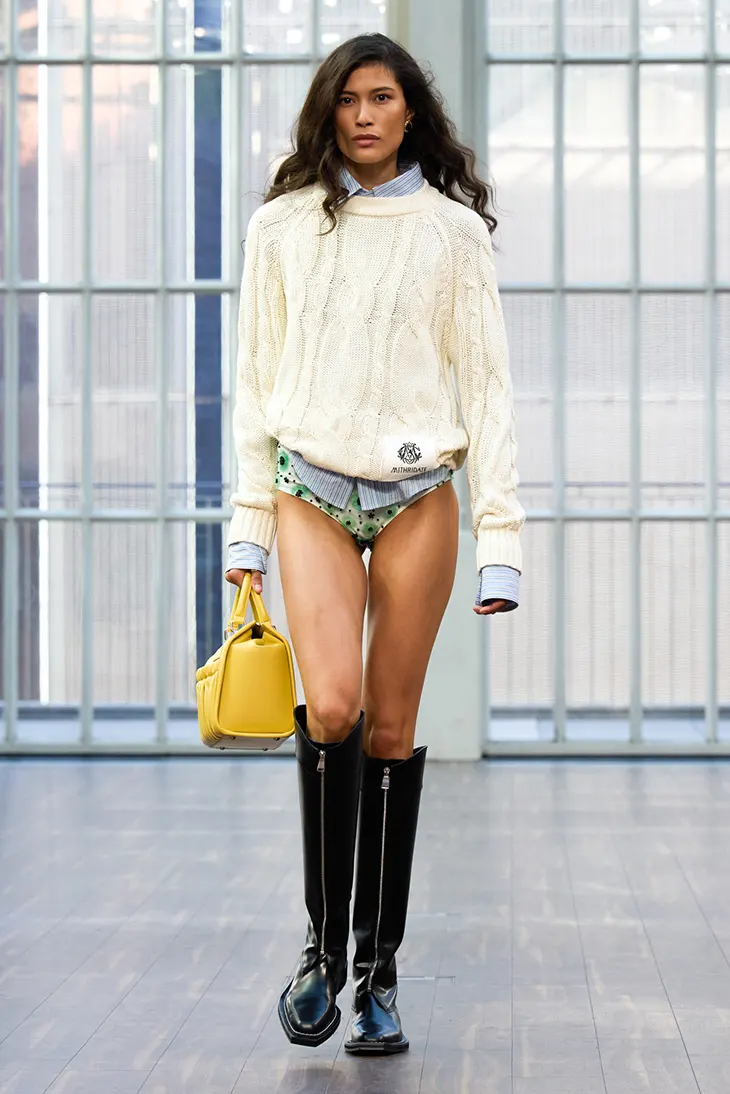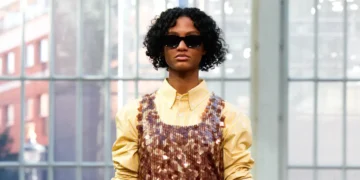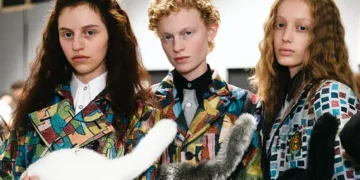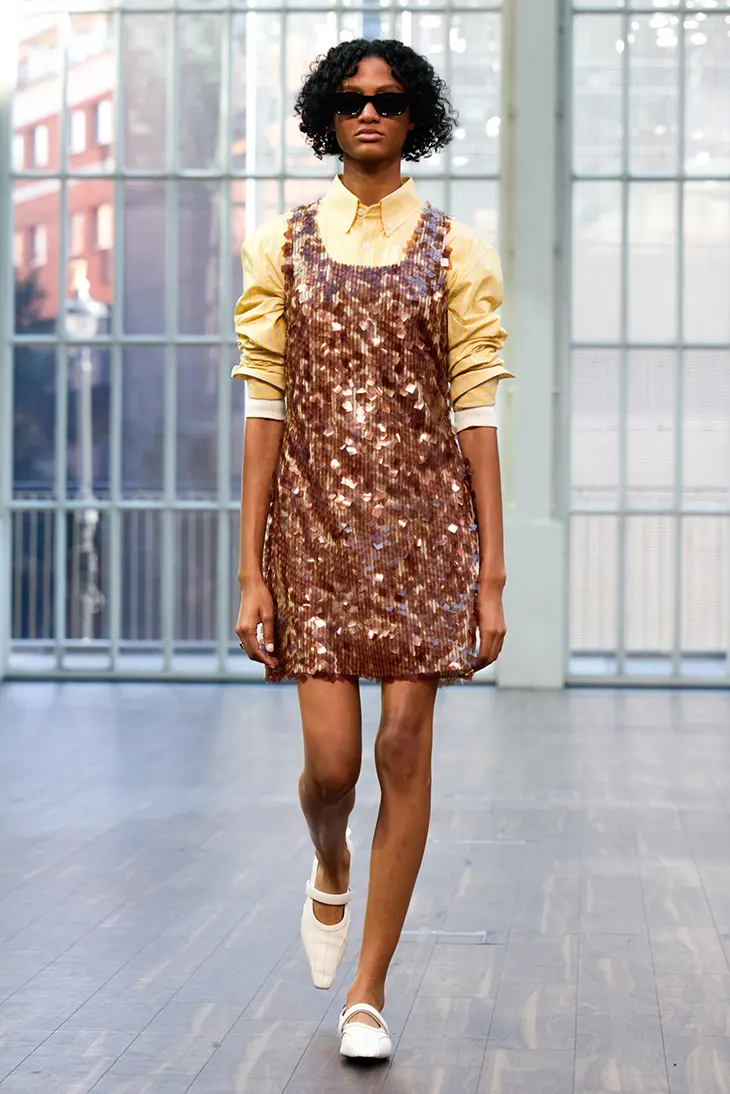
Mithridate introduced its SS26 collection, Edge of Seventeen, under Creative Director Daniel Fletcher. The lineup drew on the extravagance of the 1980s, unfolding as a tale that began in the countryside and carried into the city. Mud-splattered drives into London set the tone for nights of excess, with Fletcher channeling the era’s unruly energy through refined craft and the label’s evolving language.
Fletcher used British sporting influences as a counterpoint to city excess, with silhouettes and references colliding in deliberate tension. The spirit of the Sloane Ranger came through in rugby jerseys styled over business shirts, sequins cut against striped cotton, and cable knits layered onto wool-silk tailoring. Colors deepened the dialogue between settings, with racing green and chocolate brown offset by baby blue and lavender. This palette drew a line between the polished formality of the countryside and the unpredictability of London’s nightlife.
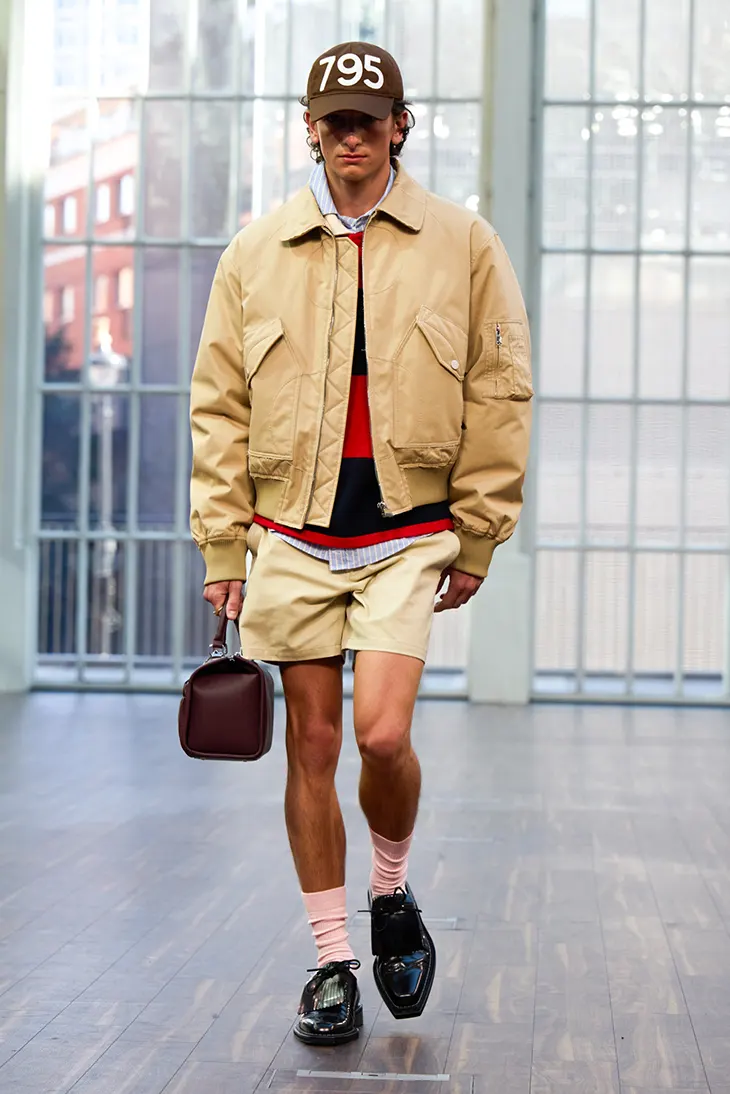
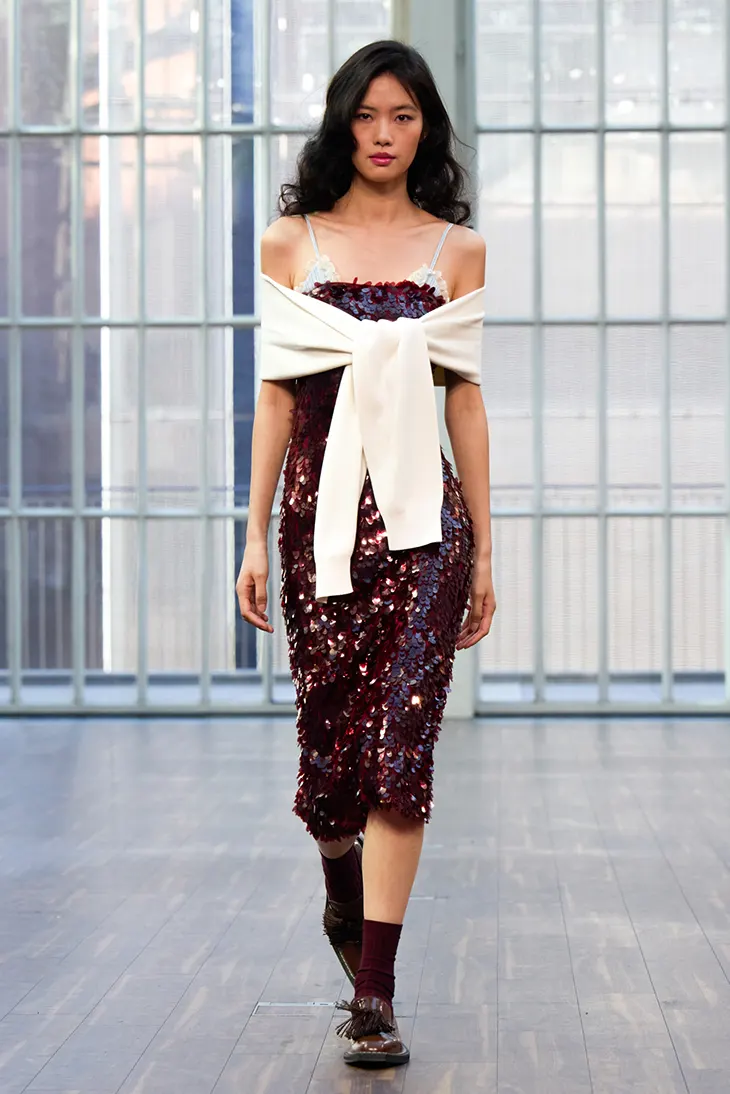
The collection pushed experimentation through inventive treatments of familiar garments. A carpet became an evening dress, while sliced sweater sleeves reappeared as stoles. Family crests expanded into exaggerated motifs, asserting presence across tailored pieces. Taffeta appeared in sculptural puffball party dresses, a direct nod to the evening styles of the 1980s. Fletcher proposed menswear and womenswear options for night, giving tailored jackets and gowns integrated tasseled scarves that shifted into more formal propositions.
Numbers surfaced as an emblem across the season, painted in oversized type on tailored coats, knitwear, and dinner shirts. They also hung from doctor-style bags, acting as graphic punctuation throughout the collection. Fletcher pulled inspiration both from rugby fields of the home counties and from the symbolic order of feng shui, tying Western references to Chinese philosophies. The motif created a visual thread that spoke to Mithridate’s ongoing dialogue between cultures.
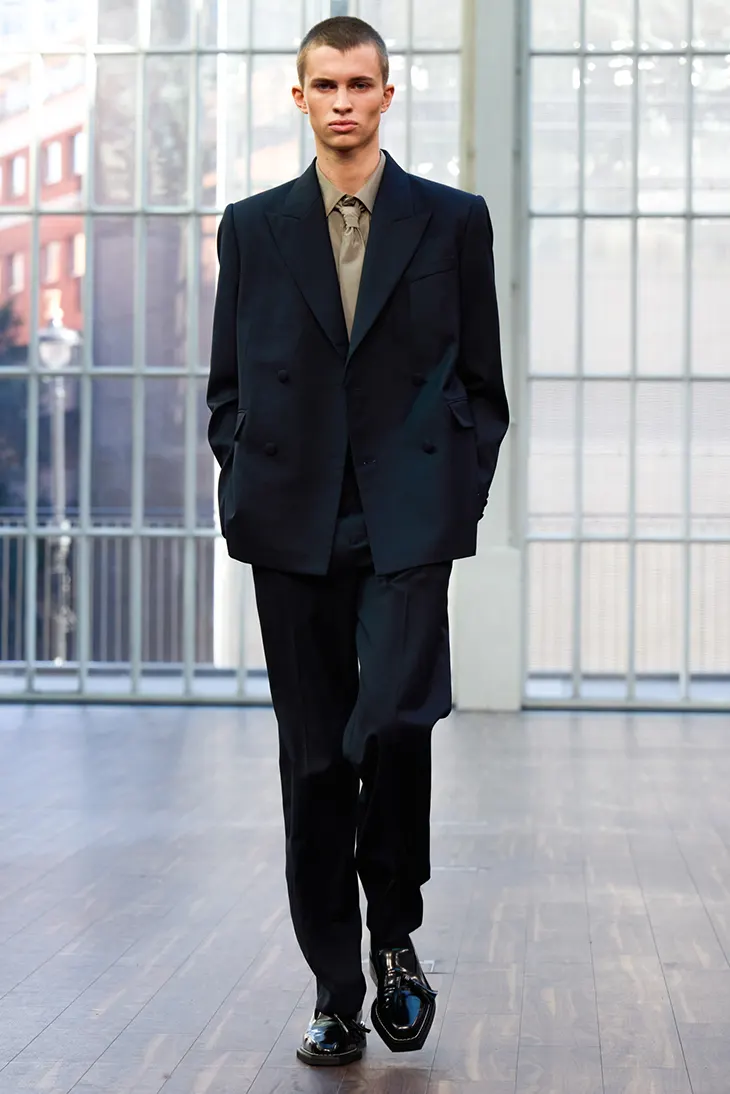
Accessories carried the idea of travel and discovery. Fletcher designed oversized bags that recalled vintage trunks, decorated with embossed tags that hinted at movement between country and city. Tasseled loafers brought the sensibility of the golf course into urban settings, while angular riding boots sharpened traditional equestrian lines. Jewelry added to this sense of inherited and imagined history: signet rings suggested long-established ties, while malachite and crystal costume pieces reinforced the weight of domestic memories.
With this collection, Fletcher further defined Mithridate’s current direction. He positioned British influences against Chinese craftsmanship, shaping daywear with utility and eveningwear with theatre. The eccentric energy of the 1980s informed the styling, but the construction grounded the collection in the present.
